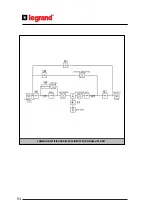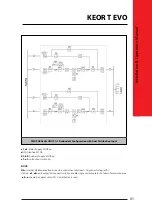
Important Notices!
Thank you for choosing LEGRAND UPS System to supply your Critical Application.
This manual contains important information about commissioning, usage and technical properties of the
UPS. It also contains safety information for operator and instructions to secure your critical load. Applying
the recommendation detailed in this manual is necessary to use UPS safely and correctly.
The manufacturer reserves the rights to change the t
echnical specifica
tions
and design without notice.
LEGRAND reserves the rights to change the information in this document
without notice. Refer to
http://ups.legrand.com/
web site to dowload last
release and translations.
Units that are labelled with a CE mark comply with the Standard: EN 62040-1 and EN 62040-2.
Read the manual completely before working on this equipment!
Keep this manual in UPS’s front cover’s pocket for easy consultation!
Reproduction, adaptation, or translation of this manual is prohibited without prior
written permission of LEGRAND Company, except as allowed under the copyright laws.
70
68
11. Troubleshooting
The aim of this chapter is to identify potential isues, understand the root cause of the problems and provide
solution to them.
11.1.
Bypass Voltage Failure Alarm
It means that auxiliary mains supply voltage is out of the limit.
Make sure that the auxiliary mains supply circuit breaker is “ON” and the voltage / frequency is between the
bypass limit.
11.2.
Bypass Phase Sequence Wrong Alarm
It means that phase sequence of auxiliary mains supply voltage is not OK. Phase sequence of the auxilary
mains supply should be changed. Please contact the LEGRAND Technical Assistance Center.
11.3.
Inverter not sync. with bypass Alarm
Frequency of auxiliary mains supply voltage is beyond the frequency range for online operation or auxiliary
mains supply voltage is out of limit. Check if the auxilary mains supply v
oltage is in specified limits
.
11.4.
Input phase sequence wrong Alarm
It means that phase sequence of common mains supply voltage is not OK. Phase sequence of common
mains supply input should be changed. Please contact the LEGRAND Technical Assistance Center.
11.5.
Rec
tifier N
ot Sync. With Input Alarm
Frequency of common mains supply voltage is beyond the frequency range of rec
tifier
or common mains
supply voltage is out of limit. Check if c
ommon mains supply is in specified limits
.
11.6.
Dc Voltage Failure Alarms
Any of the DC bus voltages is out of the limit. If you encounter this alarm during start-up, check if the
inrush circuit breaker is at “ON” position. Check polarity of external battery connections if any. If it still exists
contact the LEGRAND Technical Assistance Center.
11.7.
ESD active Alarm
It means that Emergency Switching Device (ESD) is activated (digital input “UPS OFF” is set high). Check if
ESD switch is ON or not and also check input c
onfigur
ation is correct or not.
11.8.
Ambient temperature high Alarm
It is shown “
Ambient temperature high
” on Diagnostics Menu. If the ambient temperature is high, it
causes a rise in the internal temperature of UPS and this alarm appears. In this case; the
first
thing to do is
cool the environment.
11.9.
Overload Alarms
Loads connected to the output of the UPS exceed the nominal power of the unit so it gives “
Rec
tifier
overload
” and/or “
Output overload
” alarms. Check if there is an overload and origin, remove the excessive
load. Hence the alarm would switch t
o off
.
Residual voltage and high temperature metal parts inside even if the UPS is
disconnected. Contact may cause electric shock and burns. All operations except
replacing battery fuses shall be carried out by the authorized Legrand UPS Technical
Service Personnel only.
Make sure that the UPS is not overloaded to provide a higher quality supply to the
loads.
















































